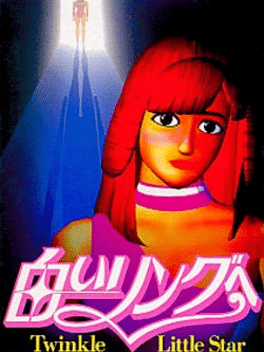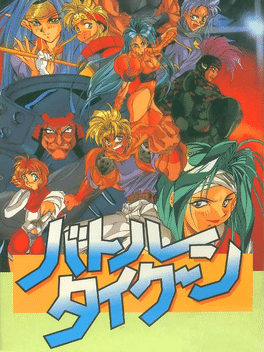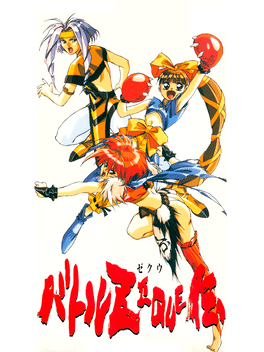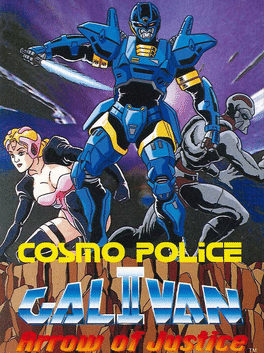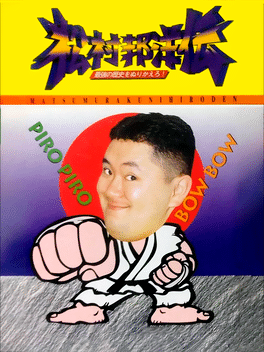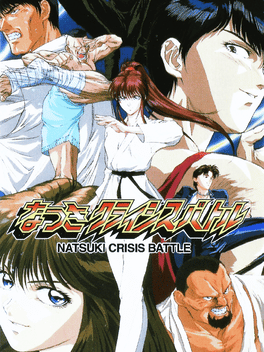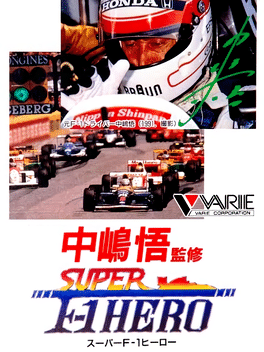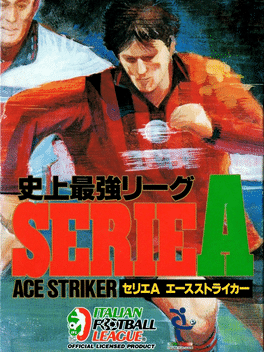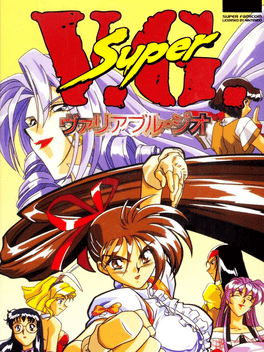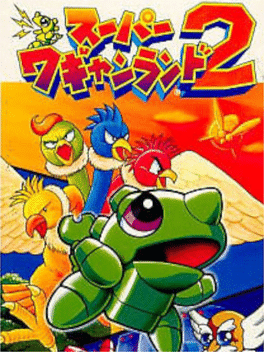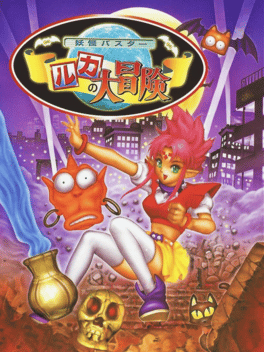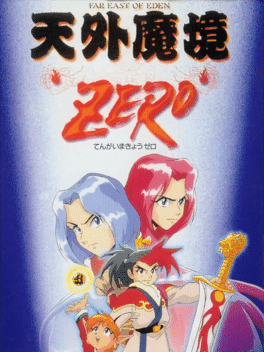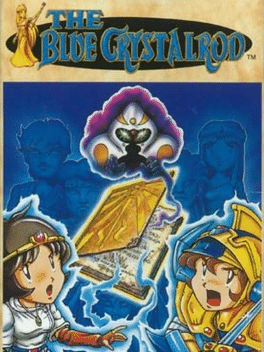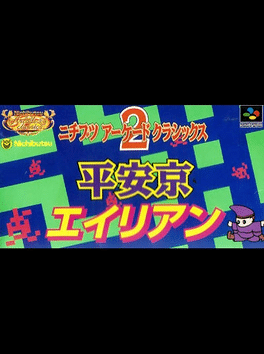Most Popular Super Famicom Games - Page 28
-
Shiroi Ringu he: Twinkle Little Star
1995
Train your very own professional wrestlers and make her the strongest in the world! Face off with rivals and discover friendship in the deeply engaging story mode or take your seasoned wrestler to the test in free play mode. Popular female Japanese professional wrestlers like Shinobu Kandori and Noriyo Tateno appear in this game -
Battle Tycoon: Flash Hiders SFX
1995
In a war torn world of magic and science, a young man by the name of Bang Vipot unwittingly thwarted the designs of an evil organization sponsoring a fighting tournament. One year later, that tournament, Battle Tycoon is happening once more, and Bang has returned to fight again. -
Battle Zeque Den
1994
Battle Zeque Den
1994
Three girls embark on a journey to defeat evil forces trying to take over the world. The red haired Rufu can use spirits and magical powers, Kairu is a fast and strong martial artist and Hamusu can use her incredible boxing skills and cute pink gloves. Each girl is associated with a different elemental spirit, namely Fire, Earth and Water. -
Cosmo Police Galivan II: Arrow of Justice
1993
The evil syndicate Mado was defeated and couldn't seize control over the universe. The dark lord Madius has rebuilt his forces, and again Earth comes threatened by evil. Cosmo Police Galivan strikes back to save the universe once again from the clutches of evil. -
Matsumura Kunihiro-den: Saikyou no Rekishi wo Nurikaero!
1994
Kunihiro Matsumura, famous for his impersonations, battles as the "karateka" to face off against seven different opponents. With original style and gameplay, the game uses a parody of fighting moves along with various gag moves such as the Piro Piro and Bow Bow evasion technique. -
Natsuki Crisis Battle
1995
isumi Natsuki is a member of the karate club at Goujyu High School. Strong and very skilled, only the captain of the group, Masaoki Yanagisawa, is a match for her. Her life starts to get really complicated when a student named Rina Takaoka is transferred to her school and becomes her classmate. Takaoka's former colleagues are set to punish her for having left Jotoh Academy, a school famous for it's martial arts. -
Dolucky no A.League Soccer
1994
The Wild Bears have issued at challenge, and the whole town is down with soccer. Neco Dolucky isn't about to lay in the sun and sit this one out. He assembles his friends and enters his team, The Red Hot Doluckies, to challenge all on-comers to a heated battle. -
Nakajima Satoru Kanshuu: Super F-1 Hero
1992
Nakajima Satoru Super F-1 Hero is a Formula One racing game. The player can select between various competitions, each increasing in difficulty and course number, and compete against CPU opponents in races across the world. The player can also choose to do practice runs or time trials on the various courses in the game. There are various customization options for the player's car, though if they so wish they can simply choose a pre-selected "Type" that automatically customizes a car to maximize handling or top speed, for example. The game was endorsed by Japanese F1 driver Satoru Nakajima, who was active throughout 1987 to 1991. Super F-1 Hero was not released outside of Japan, neither was its direct sequel Nakajima Satoru F-1 Hero '94. However, the original Nakajima Satoru F-1 Hero is better known in the US as Michael Andretti's World GP. -
Crayon Shin-chan: Nagagutsu Dobon!!
1996
A multiplayer action game featuring Shin-chan attempting to splash his clones with water. -
Shijou Saikyou League Serie A: Ace Striker
1995
Shijou Saikyou League Serie A: Ace Striker ("Strongest League History Serie A: Ace Striker") is a soccer game that features all eighteen clubs and its players from the 1994-95 Italian Serie A season. It is licensed by both the Italian Football League and the Associazione Italiana Calciatori (Italian Footballer's Association). One or two players can compete in friendly matches, a league contest or a penalty shoot-out mode. The game has a horizontal perspective of the pitch and uses static cartoon cutaways whenever a goal is scored, which show the ball get past the goalkeeper or the striker celebrating. There are a number of different celebration animations that might play after each goal. -
Super V.G.
1995
Super V.G.
1995
A stripped-down version of Advanced V.G. that removes the Yuka clone, the Hybrids and the Story Mode. -
Super Wagyan Land 2
1993
Super Wagyan Land 2
1993
Super Wagyan Land 2 is an Action game, developed by Nova Games Ltd. and published by Namco, which was released in Japan in 1993. -
Super Kyoutei 2
1996
Super Kyoutei 2
1996
Super Kyoutei 2 is a Racing game, published by Nichibutsu, which was released in Japan in 1996. -
Yokai Buster: Ruka no Daibouken
1995
Game developers Sting' were contracted by the publishing comglomerate Kadokawa Shoten for a tie-in game for their gaming magazine Marukatsu Super Famicom, which had recently just started pushing a new mascot named Ruka (with an accompanying mini manga in each issue) to try and help boost sales of the magazine. Rather than create a new game from scratch, Sting opted to re-brand the already existing "The Jetsons: Invasion of the Planet Pirates" game they had released the year before, which had not been released in Japan. The gameplay and level design between the two games is ultimately the same, though the story, sprites, and artwork were completely redone, as well as music. -
Tengai Makyou Zero
1995
Tengai Makyou Zero
1995
In the feudal Japan-like world of Jipang, an evil prince releases the demon lord Ninigi, who in turn seals the gods of Jipang and suppresses the people of six kingdoms with his demon henchmen. After one of the henchmen attack his village and slay his grandfather, the main character, Higan, learns he is the legendary "Fire Hero" and must set off to save the kingdoms. Along the way, Higan meets several characters, such as Subaru, a fairy and Tenjin, a swordsman. Tengai Makyo Zero is a 1995 role-playing video game developed by Red Company and published by Hudson for the Super Famicom. The game was released exclusively in Japan on December 22, 1995, and is the fourth installment in the Tengai Makyo series. Like several games in the Tengai Makyou series, it is based on the novel "Far East of Eden". -
Captain Tsubasa IV: Pro no Rival-tachi
1993
Captain Tsubasa 4: Pro no Rival-tachi is the fourth sequel of the original Captain Tsubasa videogame series by Tecmo. It's a direct sequel of Captain Tsubasa 3: Koutei no Chousen and released exclusively in Japan for Nintendo's Super Famicom on April 3, 1993. -
The Blue Crystal Rod
1994
The Blue Crystal Rod
1994
The Blue Crystal Rod is an Adventure game, developed by Game Studio and published by Namco, which was released in Japan in 1994. -
Princess Maker: Legend of Another World
1995
Princess Maker: Legend of Another World is a Strategy game, developed by Gainax and published by Takara, which was released in Japan in 1995. A revamped and remade version of Princess Maker 2, exclusively for the SNES. -
Kenyuu Densetsu Yaiba
1994
Kenyuu Densetsu Yaiba is a Role-Playing game, developed by Atelier Double and published by Banpresto, which was released in Japan in 1994. Based off the shōnen manga series, Legend of the Swordmaster Yaiba, by Gosho Aoyama. -
Nichibutsu Arcade Classics 2: Heiankyo Alien
1995
An upgraded version of the arcade classic Heiankyo Alien, with the original included.
